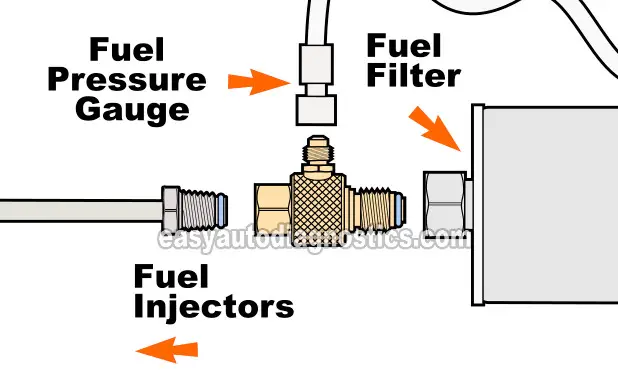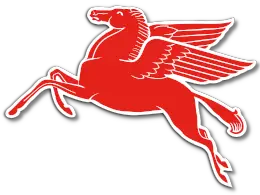
The fuel pump can be easily tested with a fuel pressure tester on your 2.8L Chevrolet S10 pickup. In this tutorial, you'll find the step-by-step instructions that explain how to connect a fuel pressure test gauge to the fuel system and check the fuel pump pressure.
I'm also including a section on using starting fluid to determine if the engine won't start due to lack of fuel.
Contents of this tutorial:
APPLIES TO: This tutorial applies to the following vehicles:
- 2.8L Chevrolet S10 Pickup: 1988, 1989, 1990, 1991, 1992, 1993.
- 2.8L GMC S15 Pickup: 1988, 1989, 1990.
- 2.8L GMC Sonoma: 1991, 1992, 1993.
ENGINE NO-START DIAGNOSTICS: The following guide is a good engine no-start troubleshooting guide:
Symptoms Of A Bad Fuel Pump
You would think that a bad fuel pump would simply stop working and the engine would not start until it was replaced.
Unfortunately, a fuel pump can fail but provide just enough fuel to start the engine but not enough to keep it running optimally. To reiterate this point, the fuel pump can fail in two ways:
- An engine no-start problem.
- An engine performance problem (the engine starts and runs, but runs badly).
When the fuel pump supplies barely enough fuel to start the engine, you'll see one or more of the following symptoms:
- Engine takes longer than usual to start (extended cranking).
- Engine idle is very rough.
- Engine backfires thru' the intake manifold under load.
- Engine starts, then dies.
- Lack of power when accelerating the vehicle under load.
A fuel pump pressure test will help you determine if a fuel pump failure is causing an engine no-start or an engine performance problem.
Where To Buy A Fuel Pressure Test Gauge
The Actron CP7838 Professional Fuel Pressure Tester is my go-to tester for two reasons: Its quality and its brand name (it's not some cheap knock-off tool that'll only last one use). You can buy it here: Actron CP7838 Professional Fuel Pressure Tester (at amazon.com).
Disclosure: As an Amazon Associate, I earn from qualifying purchases. Buying through these links helps support this site at no extra cost to you. Thanks for your support —it really means a lot!
Fuel Pump Pressure Specification
| Chevrolet | ||
|---|---|---|
| Year/Engine/Model | KOEO | KOER |
| 1988-1993 2.8L TBI S10 Pickup | 9-13 PSI | 9-13 PSI |
| GMC | ||
|---|---|---|
| Year/Engine/Model | KOEO | KOER |
| 1988-1993 2.8L TBI S15 Pickup, Sonoma | 9-13 PSI | 9-13 PSI |
KOEO = Key On Engine Off.
KOER = Key On Engine Running.
Using A Fuel Pump Pressure Tester To Test The Fuel Pump
In order to check the fuel pump pressure, a special adapter must be installed between the fuel filter and the fuel line that connects to the throttle body.
As you can see in the illustrations in the image viewer above, the adapter is connected to the outlet side of the fuel filter.
NOTE: If you don't have a fuel pressure tester with the correct adapter, see my recommendations here: Where To Buy A Fuel Pressure Test Gauge.
OK, let's get testing:
- 1
Place a shop towel under the fuel filter. The shop towel's job is to absorb any fuel that may leak when doing the next step.
- 2
Disconnect the fuel line from the fuel filter.
NOTE: You need to disconnect the fuel line on the engine side of the fuel filter. - 3
Connect the test adapter between the fuel line and the fuel filter.
- 4
Connect the fuel pressure gauge to the adapter.
- 5
When ready, ask your helper to cycle the key ON and OFF but don't crank the engine.
- 6
Check your connections for fuel leaks. Resolve any fuel leaks before continuing to the next step.
- 7
Crank the engine and check the fuel pressure gauge.
- 8
Your fuel pressure gauge should register the specified fuel pressure.
Let's interpret your test results:
CASE 1: The fuel pressure test gauge registered 0 PSI. This test result confirms that a lack of fuel from the fuel pump is causing the engine to not start.
This test result usually confirms that the fuel pump has failed and needs to be replaced. When replacing the fuel pump, you'll also need to replace the fuel pump strainer and the fuel filter.
CASE 2: The fuel pressure gauge registered the indicated fuel pressure specification. This test result tells you that the fuel pump is functioning correctly and sending fuel to the fuel injectors.
If the engine isn't starting, You can conclude that the fuel pump IS NOT behind the issue.
CASE 3: The fuel pressure gauge registered a fuel pressure way below the specification. This test result tells you that the fuel pump is failing. Replace the fuel pump, the fuel pump strainer, and the fuel filter.
The Starting Fluid Test

The cool thing about the throttle body fuel injection system is that you can see whether or not the injectors are injecting fuel into the intake manifold.
The other benefit of this system is that when fuel is not being injected you can simply spray starting fluid into the throttle body bores and then crank the engine and see if the engine starts.
If only fuel injection is missing, the engine will start and run until the starting liquid you sprayed is consumed.
Although this is not the most accurate way to test the fuel pump, it will point your engine no-start diagnostic in the right direction.
IMPORTANT: If you haven't checked all six spark plug wires for spark yet, please do so before performing the starting fluid test. I recommend using a dedicated spark tester for the spark test.
OK, these are the test steps:
- 1
Remove the cover from the air cleaner assembly.
You don't have remove the air cleaner assembly from the engine (best to leave it in place). - 2
Open the throttle manually, and spray starting fluid down the bore.
- 3
When you have sprayed a good squirt of starting fluid, quickly install the air cleaner assembly's cover (you don't have to tighten the nut).
Reinstalling the air cleaner assembly's top is a very important safety precaution in case you get a back-fire thru' the intake manifold. - 4
Crank the engine once you've place the cover back on the air cleaner assembly.
- 5
You'll get one of two results with this test:
1.) The engine will start momentarily and after a few seconds will die.
2.) The engine will only crank but not start at all.
OK, let's interpret your test results:
CASE 1: The engine started and ran for a few seconds. This test result confirms that the engine isn't starting due to a lack of fuel.
The most likely cause of this lack of fuel is a bad fuel pump.
CASE 2: The engine did not start, not even momentarily. This test result tells you that the engine's no-start problem IS NOT due to a lack of fuel.
It's important to note that this the accuracy of this test result depends on having all six spark plug wires sparking.
More 2.8L V6 Chevrolet S10, GMC S15, And GMC Sonoma Diagnostic Tutorials
You can find a complete list of diagnostics tutorials for the 2.8L V6 S10, S15, and Sonoma in this index:
Here's a small sample of the tutorials you'll find:
- How To Test Engine Compression (1988-1993 2.8L Chevrolet S10 Pickup, GMC S15 Pickup, GMC Sonoma).
- How To Test The Alternator (1988-1993 2.8L Chevrolet S10 Pickup, GMC S15 Pickup, GMC Sonoma).
- How To Test The MAP Sensor With A Multimeter (1988-1993 2.8L Chevrolet S10 Pickup, GMC S15 Pickup, GMC Sonoma).
- How To Test The Blower Motor (1988-1993 2.8L Chevrolet S10 Pickup, GMC S15 Pickup, GMC Sonoma).

If this info saved the day, buy me a beer!







